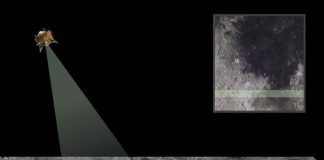JULY 14, 2018
 Thursday was a special day for Pluto. On July 12, the dwarf planet crossed the plane of the solar system for only the second time since its discovery. It will be another 161 years before it does so again. The opportunity provides scientists a unique chance to look at Pluto using telescopes from Earth.
Thursday was a special day for Pluto. On July 12, the dwarf planet crossed the plane of the solar system for only the second time since its discovery. It will be another 161 years before it does so again. The opportunity provides scientists a unique chance to look at Pluto using telescopes from Earth.
Today, Pluto is crossing the solar system’s plane for the first time since 1931, only a year after its discovery. It won’t do so again for 161 years. (
Anne Verbiscer) pic.twitter.com/F6EHV9CoVu
– Andrew Rader (@marsrader) July 12, 2018
All the major planets all have orbits that line up nearly perfectly. They all orbit on the same plane, which astronomers call the “ecliptic.” While all the major planets orbit on this ecliptic, Pluto is different, and orbits the Sun at a 17 degree angle.
This means that sometimes, Pluto orbits above the other planets, while other times it orbits below. The moments when Pluto transitions across the ecliptic are called nodes. In this case, Pluto is passing from above the ecliptic to below it, which makes this specific point Pluto’s descending node.
The last time Pluto passed one of its nodes-its ascending node-was in 1931, one year after the dwarf planet was first discovered by Clyde Tombaugh. It took 87 years to reach the descending node this week, and it will take another 161 years to circle back around, meaning the next time Pluto will line up with the other planets is in 2179.
In addition to being a neat fact about Pluto’s orbit, this moment gives scientists a chance to look at Pluto in a new way. When the sun, Earth, and Pluto all line up perfectly, Pluto reflects more light back toward the Earth through a process known as the opposition effect. Accordingly, astronomers are pointing many of our telescopes toward the dwarf planet in an effort to learn as much as they can about the cold little world as possible.
Courtesy/Source: Popular Mechanics








































































































